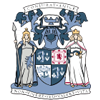Strong demand worldwide has made rhinoplasty, or a nose job, one of the most frequently chosen cosmetic procedures in Los Angeles. Whether your reason for the surgery was aesthetic or breathing, what occurs after the procedure is equally vital. Rhinoplasty Care after surgery can make a big difference to your healing, how you feel, and the outcome.
Here, we’ll detail what happens during recovery from rhinoplasty, the easy steps to recover more swiftly, and how to deal with swelling—keep your new results in mind! Having rhinoplasty surgery or about to, you will find this resource helpful for your preparation.
Rhinoplasty or nose surgery is a meticulous alteration of bones, cartilage, and soft tissues of the nose to attain aesthetic or functional objectives. After the surgical procedures are over, your body initiates the complicated healing process naturally. But what matters a lot is what you do, and Post-Rhinoplasty Operative Care, which would result in doing it full justice. Rest is not the only part of post-operative Rhinoplasty Care because, as you will be told by your surgeon, swelling control, prevention of some actions, and having a clean healing environment are other components of the care. Things you do after a rhinoplasty procedure are made as important as the operation itself. Your reaction to post-surgery difficulties, your attitude to the concerns, and your compliance with the recovery must become the path towards easy recovery and the minimum of complications, as well as wonderful, lasting results.
Usually, the first two days after the Rhinoplasty Procedure are the most uncomfortable. You might notice:
Things to do right away after having rhinoplasty.
You should consult Dr. Jain again in week one to have the splints or sutures removed. Wait for these tips if you want to improve your rhinoplasty recovery:
The next step is for your swelling and bruises to start decreasing. Still, swelling inside the nose may take a while to clear up.
Continue with:
The process of Rhinoplasty Recovery is not over after several weeks of surgery, but it is a course that occurs several months into it. Although improvements are evident within a short time, proper results need time to be realized. Patience and congruency with aftercare are important to get the best outcome.
Long-term rhinoplasty recovery: What to expect:
The majority of patients say they experience only mild to moderate pain during rhinoplasty recovery. Patients typically find that pain is controlled well when the medication is completed as directed.
It’s usually safe to wear makeup away from the nose after 1–2 weeks. It is best not to put makeup on your nose until your surgeon says it’s safe.
Generally, you should avoid flying for about two to three weeks after Rhinoplasty surgery because of the possible changes in pressure and risk of swelling or bleeding.
Certain things you do or don’t do matter just as much as the direct actions you take. During your rhinoplasty recovery try not to:
Changes from your operation won’t stop at once; they’ll happen in the weeks and months afterward. The most important things for a smooth and fast rhinoplasty recovery are following instructions, having realistic aims, and keeping in touch with your surgeon.
If you care for your nose properly following rhinoplasty surgery, there will be fewer problems and your nose will look and function better.
Your whole body and inner organs are healing alongside your skin. Take things slowly, treat yourself kindly, and believe in the process.

ROYAL COLLEGE OF
SURGEONS

MEDICAL UNIVERSITY OF SOUTH
CAROLINA

UNIVERSITY OF SOUTHERN
CALIFORNIA

AMERICAN ACADEMY OF
COSMETIC SURGERY

AMERICAN SOCIETY OF
LIPOSUCTION SURGERY